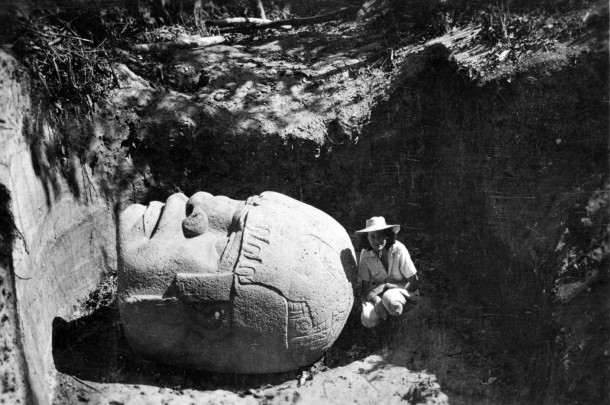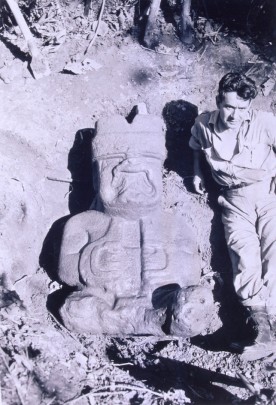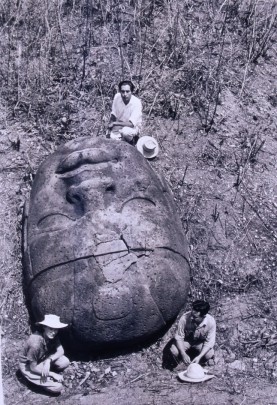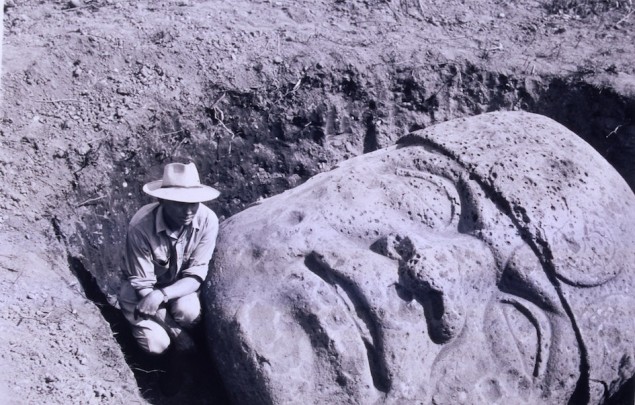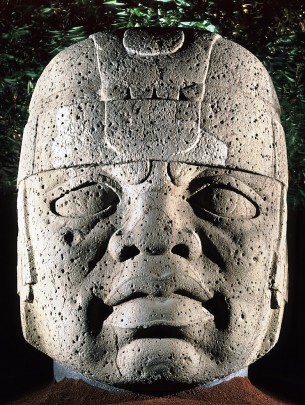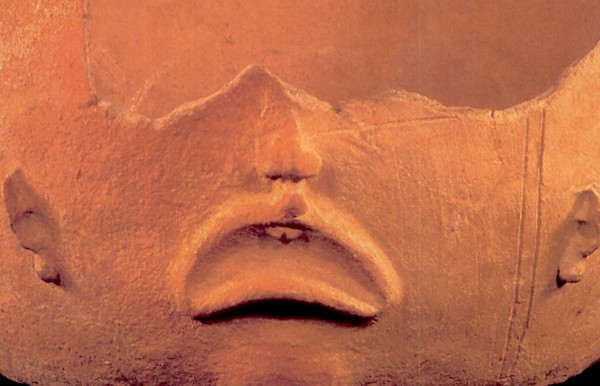San Lorenzo Tenochtitlán was an Olmec city that commanded land and river transport routes. It occupied a large tropical island, bordered by navigable rivers and extensive floodplains in the lower basin of the Coatzacalcos River. The oldest period of occupation comprises two phases, the Ojochi phase and the Bajío phase, lasting from 1500 to 1200 BC.
The population grew dramatically between 1200 and 850 BC, and activities related to production and subsistence also increased, with a progressive interest in the cultivation of corn. One of the most remarkable construction activities was the alteration of the very land where San Lorenzo is located; millions of cubic meters of sedimentary infill were moved to reshape the site, creating multi-level terraces for habitation around the highest point of the site. Excavation of the housing areas shows an important social differentiation that is reflected in the construction techniques, some with basalt columns and red pigment floors, while other constructions are modest and were made with wood, clay and floors of local stone. In the perimeter of the housing areas evidence was found of productive activities such as obsidian implements, reuse of the basalt stone, the use of chapopote (tar) as a resin and glue, as well as areas that indicate animal butchering and food preparation areas.
Sculptures such as thrones and colossal heads carved from volcanic rock brought to the site from the Sierra de los Tuxtlas are another characteristic of San Lorenzo. It is possible that the colossal heads formed a straight line from north to south on the east side of the principal plaza.
Before 900 BC, San Lorenzo’s population had grown to 13,000, but the city and surrounding areas began to be abandoned between 900 and 850 BC; warfare, disease, and environmental change probably contributed to this process. By 850 to 600 BC, during the Nacastre phase, just 500 people were living in the area.
-
+52 (229) 934 9981
-
This email address is being protected from spambots. You need JavaScript enabled to view it.


